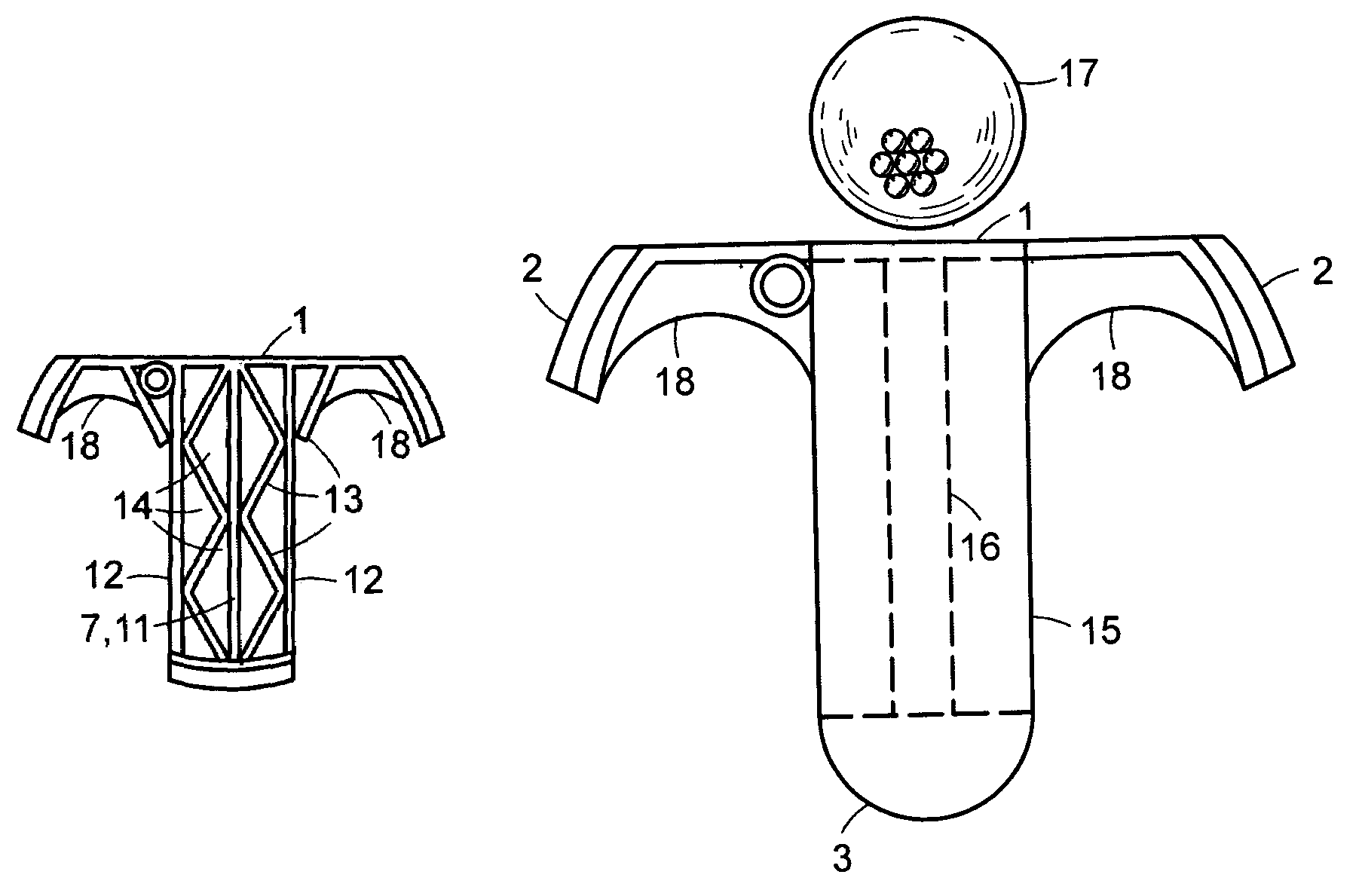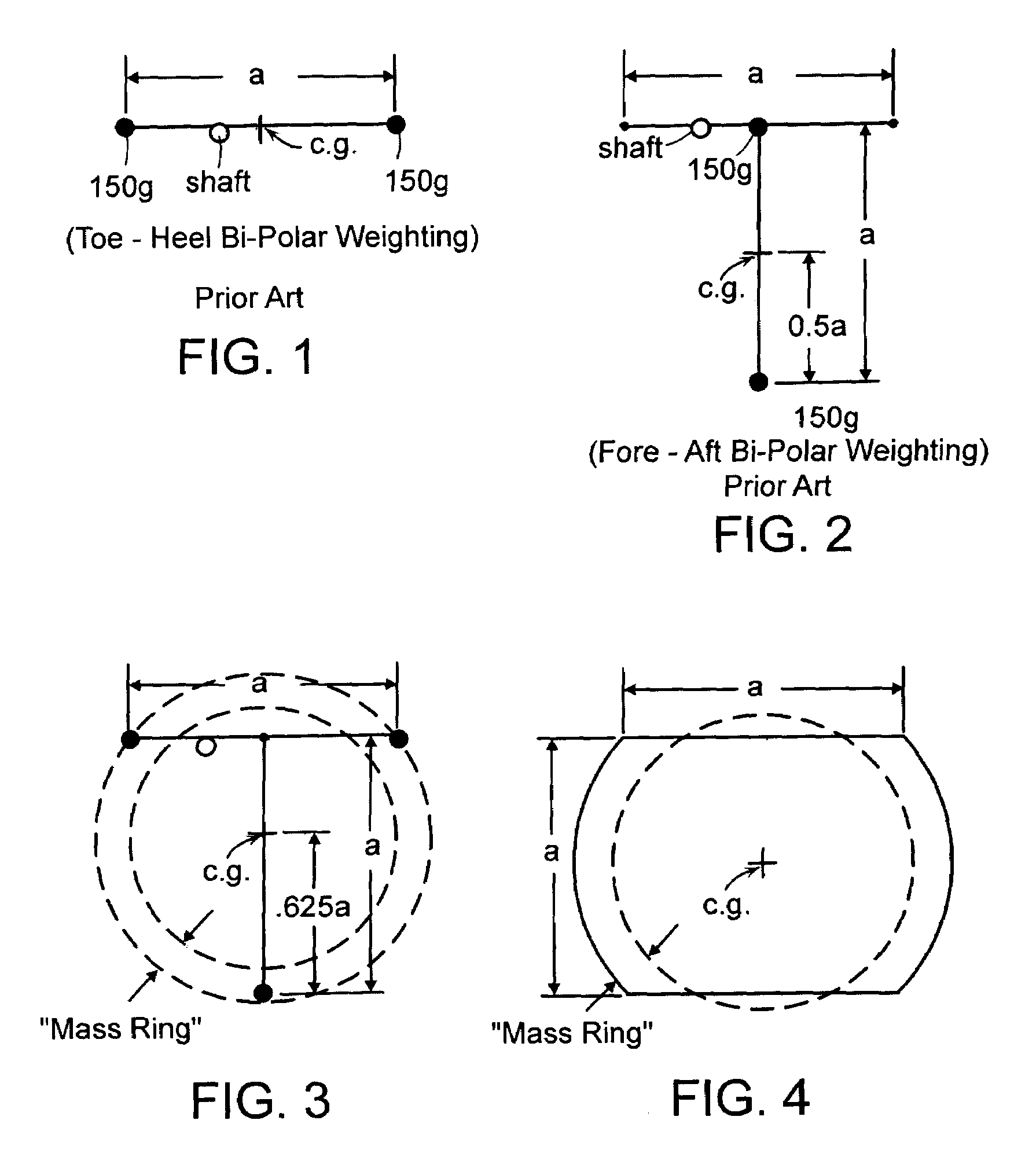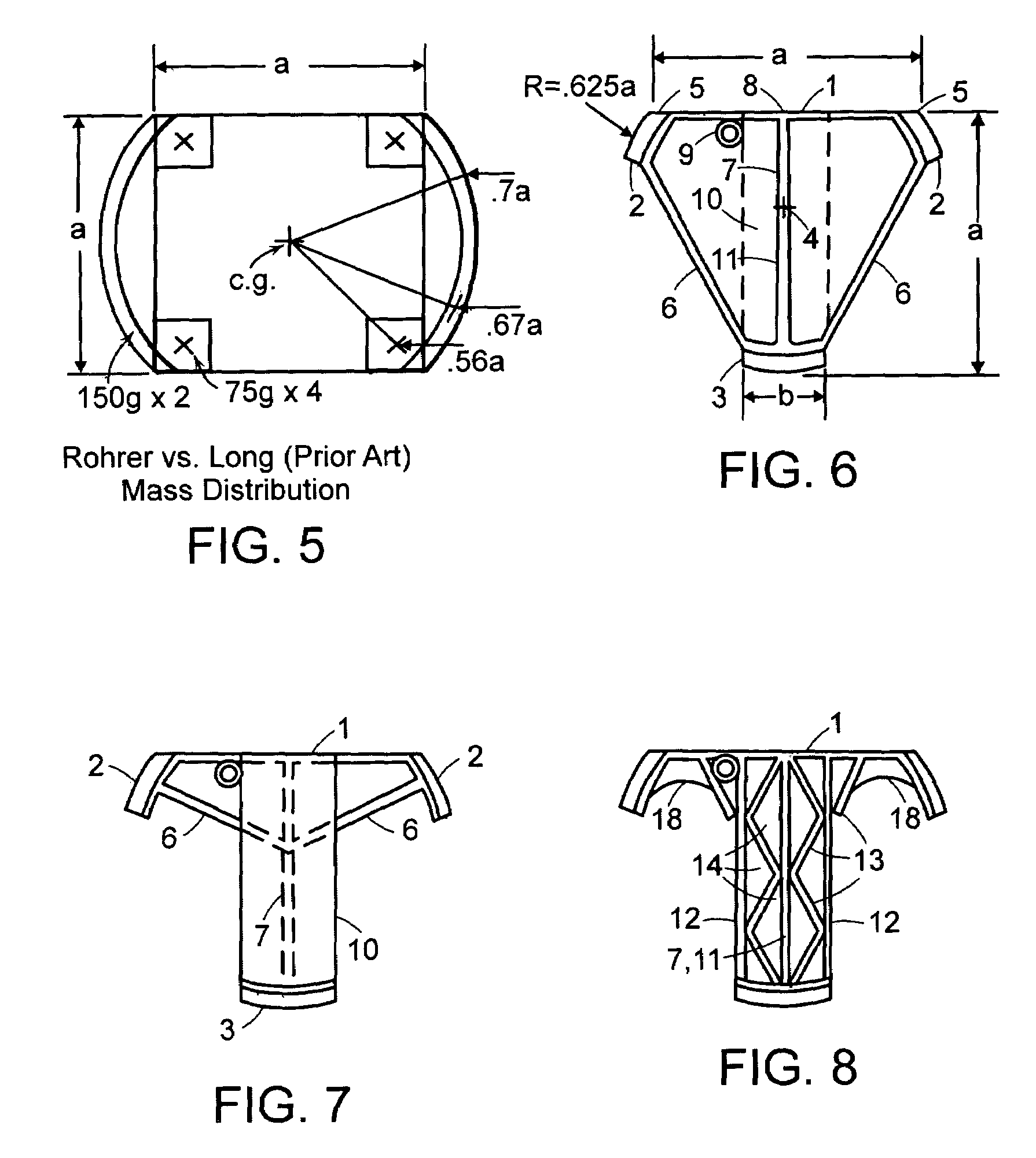Golf putter with improved moment of inertia, aim and feel
a golf putter and moment of inertia technology, applied in the field of golf putters, can solve the problems of lack of mass of voids, achieve the effect of reducing undesirable torsional vibration from miss-hits, facilitating more accurate aim or sighting, and maximizing the clubhead planar momen
- Summary
- Abstract
- Description
- Claims
- Application Information
AI Technical Summary
Benefits of technology
Problems solved by technology
Method used
Image
Examples
Embodiment Construction
[0044]FIGS. 1 through 5 are simplified idealized labeled and dimensioned drawings for the purpose of comparing prior art high MOIP putter designs with the present invention. These figures and the related MOIP comparisons were previously discussed.
[0045]FIG. 6 is a 3 circular section (tri-polar) Mass Ring weighted putterhead of the present invention with strike face 1 width “a” equal to front to rear depth “a.” The circular section toe and heel weights 2 preferably of a material heavier than steel, such as brass, copper, lead, or tungsten are slightly smaller and lighter than the rear weight 3 of similar material such that all three weights are equidistant from the clubhead center of mass 4. The front ends 5 of the toe and heel weights 2 form the extreme toe and heel sections of the strikeface putterface 1. The distance from the center of mass 4 to 5 is approximately the same as the distance to the extremity of the rear weight 3 and equals about 0.625×a. The three weights are in rigi...
PUM
 Login to View More
Login to View More Abstract
Description
Claims
Application Information
 Login to View More
Login to View More - R&D
- Intellectual Property
- Life Sciences
- Materials
- Tech Scout
- Unparalleled Data Quality
- Higher Quality Content
- 60% Fewer Hallucinations
Browse by: Latest US Patents, China's latest patents, Technical Efficacy Thesaurus, Application Domain, Technology Topic, Popular Technical Reports.
© 2025 PatSnap. All rights reserved.Legal|Privacy policy|Modern Slavery Act Transparency Statement|Sitemap|About US| Contact US: help@patsnap.com



